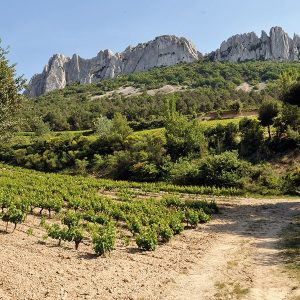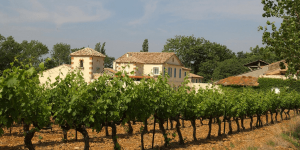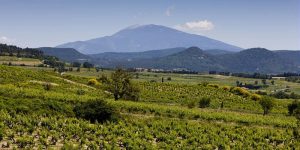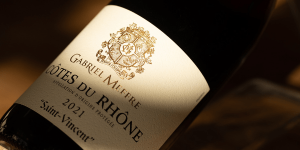Interview with Etienne Maffre, Chairman and CEO of Maison Gabriel Meffre
How has Maison Gabriel Meffre been faring in these difficult times?
The whole world has been affected by the pandemic and Maison Gabriel Meffre is no exception. To look at the positives, the crisis has highlighted the resilience that our organisation has built up over the years.
2020 was a fairly satisfactory year, given the difficult circumstances. Our presence in many markets, with a balanced client portfolio spread over various marketing channels, has enabled us to get through the crisis.
Internally, we demonstrated agility in setting up remote working, to continue to operate in good conditions despite the public health restrictions.
With our clients, I was pleased to see that we introduced efficient and high-quality remote communication practices, which we would not have dared to deploy just a year before! We conducted business without being able to meet our clients, which is quite unusual! I don’t think that this will continue indefinitely, but much uncertainty remains. We have also had to think about the relevance of the long-distance trips that we were used to making. Perhaps they will not be so necessary. There are lessons to be learned from this experience that are in line with our CSR policy.
What kind of feedback have you been getting from your clients?
Our business is mainly done in export markets and it has stood up well overall. In France, things have been more difficult, particularly in CHR (Cafés-Hotels-Restaurants), but we have managed to maintain a privileged relationship with our clients.
In the French CHR sector, the agents we work with are in direct contact with hotels and restaurants, which are having a tough time. We have done as much as we can to provide helpful conditions. We have been more patient and understanding with payment deadlines.
In the United Kingdom and United States, for example, statistics have shown that on-premise consumption has shifted to at-home consumption. Consumption was maintained in terms of volume, but not value. This was not the case in France, where there was a drop in consumption, particularly during the two lockdowns. In addition, the sales mix has changed, with a shift in consumer purchases from bottled to bag-in-box wines and from AOC to Vin de Pays wines, as well as strong growth in distributor brands. This is not surprising in a period of uncertainty.
While we are looking forward to returning to all of our long-standing clients, particularly in the CHR sector, we are proud that we have managed to continue to sell our wines to a wide consumer segment, among other things by increasing direct sales to consumers through growth in online sales.
Is there any news on Maison Gabriel Meffre’s new plots?
We are replanting! Three years ago, we bought four hectares of vines in the heart of the Dentelles de Montmirail, in the Gigondas AOP. It is a terraced vineyard on slopes at an altitude of 400 metres. In early March, we planted Grenache Noir there using massal selection to encourage and maintain biodiversity in our vineyard. At this altitude, I am convinced that, within a few years, we will be able to make one of the finest Gigondas wines from there, which we will almost certainly produce as a separate cuvée using parcel selection.
We continue to refine our understanding of the terroirs on our properties.
For the 2020 vintage, we produced a new, particularly fine Vacqueyras cuvée using parcel selection, on safres (sandy-marl) soil from the Miocene. The plot is called ‘Les Ramières’, between Vacqueyras and Beaumes-de-Venise. This represents 15 years of work, involving replanting, terroir selection and separate vinification, to produce precise cuvées that are a delight to taste.
How do you make choices related to planting on plots?
We constantly communicate with the teams. Our oenologist, Véronique Torcolacci, and our vineyard manager, Nicolas Spéranza, play a key role in this. Gigondas is a place where we like to try new things and innovate, to find a particular expression of a terroir, including the soil, aspect, altitude and grape variety.
In Gigondas, after more than 20 years of work at Domaine de Longue Toque, we are seeing the results: an excellent balance and plenty of elegance in the cuvées, which are acclaimed by the international press.
In Vacqueyras, we acquired plots at the beginning of the 2000s. We have gradually renewed the vineyard there using specific plant materials. The current age of the vineyard means we can now produce silky and balanced cuvées, in line with our ambitions for quality. Since last year, we have been adopting the same approach on our vineyards in Cairanne and Rasteau, which we acquired in 2019. We have adopted practices in the southern Rhône Valley that are inspired by approaches to wine growing in Burgundy.
What is your view of the environmental and climate challenges we face?
Our vineyards have been managed using responsible agricultural practices for more than 20 years. We believe in taking the time needed to do things well. We pay attention to the fertilizers we use, controlling inputs and managing water. We are currently working using organic farming practices on Domaine de Longue Toque, which will be followed by Château de Grand Escalion (currently certified HVE3 – high environmental value), our vineyard in Costières de Nîmes. In the future we plan to use biodynamic methods on Longue Toque.
We are making steady progress in terms of our practices. Regarding our partner winegrowers, we have the following target: within three years, more than 50% of our partners must have at least HVE3 certification.
Elsewhere, we are planning ahead for climate change by acquiring vineyards at higher altitude. Altitude compensates for latitude.
At an altitude of 400 metres, we observe a response from the vine that is comparable to what we see 200 km further to the north. In addition to altitude, there is a balance to be struck between developing vines and preserving existing forest environments. It also involves choosing non-cloned varieties that support biodiversity and are able to adapt to climate change. We are working on new varieties and selections of crossed varieties, which are suited to producing quality wines in a warmer environment. Some of these have been planted at Château Grand Escalion.
Concerning water supply, we have optimised irrigation at Château Grand Escalion. We provide water only when it is needed, particularly to help the plants stand up to periods of drought.
Certain stakeholders are interested in setting up regional water storage infrastructures. We are in talks with the professional association Inter Rhône and the French National Institute of Origin and Quality (INAO). As a company, we cannot drive change alone, but we are involved in projects. I believe in working together to make progress. This was the driving force behind my term as Chairman of the Union of Rhône Valley Wine Houses (UMVR). Thanks to these collective initiatives, we are stronger our experience of markets, our ambitions for quality and our concern for the environment contribute to the conversation and our shared vision. This is also part of our CSR approach. We can raise awareness among our stakeholders through responsible approaches. Within Inter Rhône, we are going to initiate a collective CSR approach. We will be the first in France to do so.
CSR begins as an individual belief and initiative, but it also makes sense as part of a collective approach. I am in favour of proactive CSR approaches, which protect the environment through the use of responsible practices.
Is there a knock-on effect with partner winegrowers?
Yes, because we tell them what type of product we need on the markets and support them in applying the approach. When we buy HVE3 or organic grapes and wines, we pay a higher price than we would for normal grapes and wines.
Our vineyards serve as test labs.
They demonstrate to our partners that it is possible to convert vineyards to organic practices without losing yield. We organise meetings on the topic of CSR and the benefits of environmentally-friendly practices. They are very keen to participate! We share our experiences, the needs of the market and our vision. It is a constant conversation.
On a final note, could you tell us about Maison Gabriel Meffre’s news and current projects?
Of course, here are the main areas of work for the coming period:
Sales growth
We are working with our main shareholder, the Boisset group, on a project that will boost sales. It has been gathering pace in recent months. We are joining our forces to be able to prospect with greater range and accuracy. Particularly in global export markets and France, where we have brought together our sales teams. We need to be present everywhere!
Digitalisation
Our former head of marketing and communication, Valérie Vincent, spoke about this in a previous article. We are continuing the digital transformation of our communication strategy. We would like to become even more professional in terms of online sales and rethink our ambitions through this lens. We continue to work on developing Maison Gabriel Meffre’s image and reputation.
Forthcoming investments
We are still looking to acquire regional vineyards, in the southern Rhône Valley, such as Cairanne and Gigondas. We are also looking at the northern Rhône Valley.
Product and marketing innovations
We continue to focus on innovative packaging, such as the 25 cl can for export markets, which targets a relatively young segment. In terms of products, we are conscious of the need to control the alcohol levels in our cuvées. It is tricky but not impossible in our region.
Thank you to Etienne Maffre for this overview. Even in this uncertain environment, we continue to move forward and lead projects that bring us closer to our clients, with a high level of expertise and quality wines! To continue to follow Maison Gabriel Meffre’s news, go to the “Our news” section of the webzine.
Rubrics
Découvrez plus d'articles...
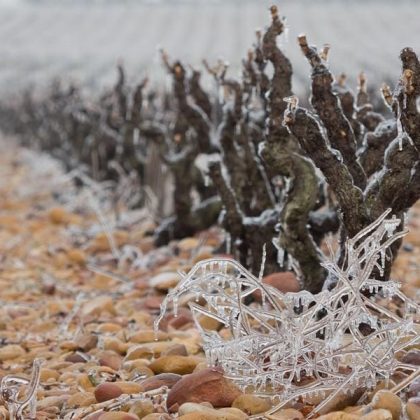
The vineyard and wine cellar in winter
What happens in the world of wine during the winter period? After the hustle and bustle of autumn, the harvests and vinification process, comes winter, a season devoted to maturation and looking after the vines.

In 2018, we will continue to strive to be a Responsible Company!
In this new year, our wish to help build a world that respects both mankind and the environment is as strong as ever. This can be seen through the number of our projects for 2018 that are closely related to our convictions as a Responsible Winery. We’re delighted to be given the opportunity to tell you about them!
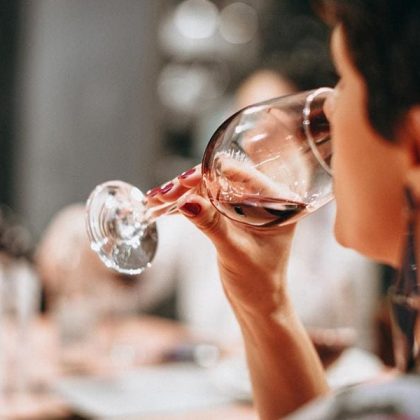
Discovering the art of pairing wine and chocolate
A morsel of white chocolate, Black Forest gâteau, pieces of stem ginger wrapped in chocolate, or Mexican chicken in chocolate sauce—all very appetising, but which wine would you serve with each one? Food and wine pairings factor in a combination of elements, such as the terroir, our powers of concentration, the circumstances of the tasting session, our sense memory and more. We guide you through some of the basic principles of this fascinating world!
